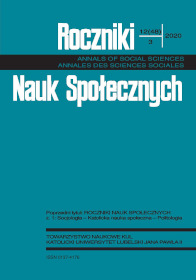Understanding How the Social Scientific Study of Same-Sex Parenting Works
Understanding How the Social Scientific Study of Same-Sex Parenting Works
Author(s): Mark RegnerusSubject(s): Social Sciences, Gender Studies, Sociology
Published by: Towarzystwo Naukowe KUL & Katolicki Uniwersytet Lubelski Jana Pawła II
Keywords: same-sex parenting; social scientific study; variables
Summary/Abstract: The social scientific study of same-sex households with children has come a long way in 10 years. Better quality data collection is now available. However, this is no guarantee that consistently sensible analyses and reasonable conclusions are imminent, because the “consensus” that children from same-sex households fare no differently than children from opposite-sex households—in particular, married families—is a carefully guarded social construction. The consensus is the result of sampling decisions, analytic comparisons, and interpretations of results that often indicate baseline differences prior to statistical controls for household instability, after which they commonly disappear. It is this variable—relationship dissolution—that remains demonstrably different between same-sex and opposite-sex relationships, even in the most tolerant of societies. The point of this article is neither to trumpet nor dispute any particular study’s conclusion in the domain of parental influence on children’s outcomes. Rather, I seek to explain how the consensus around “no differences” came to be, and how it is reinforced, despite evidence that it was, and remains, premature.
Journal: Roczniki Nauk Społecznych
- Issue Year: 48/2020
- Issue No: 3
- Page Range: 43-60
- Page Count: 18
- Language: English

